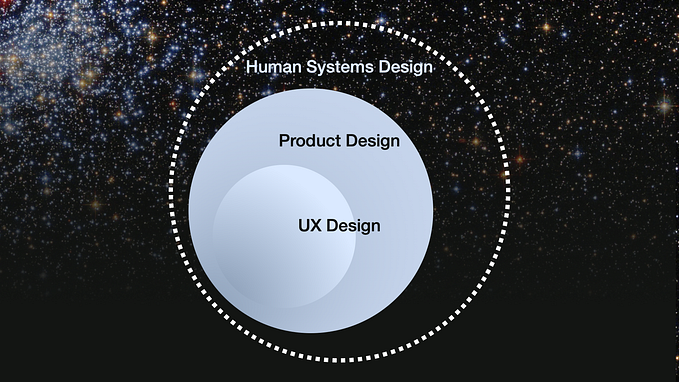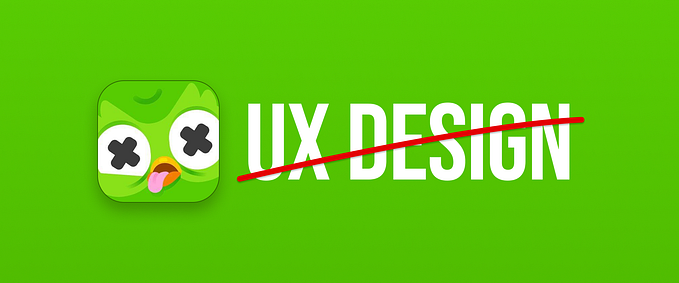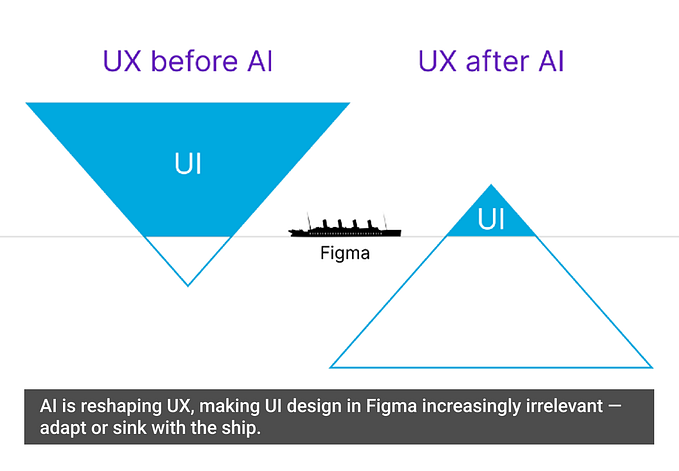Persuasive design: nudging users in the right direction
Experience Design Consultant @ Ippon Australia

As practitioners of design, we hope that users take the path we paved for them but, as you may have experienced, this is easier said than done. Rather than focussing solely on guiding your users through visual design patterns, there are subtle ways to nudge the user in the right direction through the application of design principles grounded in psychology and sociology. Persuasive design explores human behaviour and motivations to influence the ways in which people behave.
In this article, I’ll explore persuasive design, why it’s important, and a framework to apply it to your designs. In my next article, I’ll explore design patterns and techniques accompanied by examples in the real world. By the end of this series, I hope that you leave with the ability to craft more compelling experiences for your users.
What is Persuasive Design?
Persuasive design is a design practice that takes behavioural insights from psychology, like motivations and cognitive biases, and translates them into frameworks and patterns so they can be applied to product design.
Persuasive design can help:
- users in decision making
- designers communicate more clearly
- nudge users in the right direction
- help users to develop skills
- drive users end or begin new habits
This practice is particularly relevant for digital experiences since the introduction of interactive technologies has dramatically increased the potential to influence human behaviour. While it may not be applicable to designing all products and services, it is nonetheless important for those whose role involves architecting choices for others to understand. These frameworks are significant because they provide ways to win and retain users without resorting to negative tactics that risk violating trust.
Some argue persuasive design seeks to exploit human behaviour to achieve selfish goals — like mind control. While the line seems blurry, I want to point out that the onus is on the designer to understand the ethical implications of the experiences they craft. Designers should only employ persuasive design techniques hand-in-hand with values of transparency and benevolence or else it is not justified. The practice I speak of in this series taps into existing motivations and needs to nudge users towards their goals, not force or trick a user to do something they otherwise would not do. Persuasive design is important because in using its frameworks, choice architects are guided away from resorting to negative tactics such as deception or coercion.
A Framework: Fogg’s Behaviour Model (FBM)
Frameworks have arisen to help designers break down the sociological and psychological underpinning of persuasive design and aid in applying it in the field. Designers have struggled with applying these theories as they are often too broad and abstract but frameworks such as Fogg’s Behaviour Model (FBM) help.

B. J. Fogg, Director of the Stanford Behavior Design Lab, believes that three variables (motivation, ability, trigger) must converge for behaviour to occur. When it does not happen, one of these three elements is missing. This model helps designers to identify what is blocking a user from performing actions and offers a collection of subcomponents to diagnose the issue: core motivators, simplicity factors, and prompts (or triggers). Once a hypothesis is formulated, you can then validate any assumptions which may lead to a solution.

Motivation:
Fogg identifies three types of motivational drives, each of which has two sides. When motivation is high, users are likely to go through with harder tasks to achieve their goals. When motivation is low, people are more likely to perform only easy tasks.
- Sensation (pleasure/pain): the physical level of motivation
- Anticipation (hope/fear): the emotional level of motivation
- Social cohesion (social acceptance/rejection): the social level of motivation
Ability:
Another key element in the FBM relates to how easy it is to accomplish a target behaviour. For humans to behave in a certain manner we must have the ability to do so. This sounds like common sense yet designers tend to assume that users have more ability than in reality. Fogg outlines six elements that hinder ability:
- Time: the time taken to complete the behaviour
- Money: the cost barrier to perform a behaviour
- Effort: the physical effort it takes to perform a behaviour
- Cycles: the mental exertion required to complete an activity
- Deviance: how socially acceptable it is to complete the behaviour
- Routine: how routine the given behaviour is (one has greater ability to perform behaviours that are routine compared with behaviours that are irregular)
Fogg then outlines three key paths to increasing ability. The path that he advocates to tackle first is to scale back the target behaviour so it is easier to do. Usability testing is one way to diagnose barriers such as comprehension or ease of use to accomplish a target behaviour. The hardest path to increasing ability is through training and he recommends avoiding this route (unless necessary). Another option is to provide a tool or resource that makes the behaviour easier.
Triggers:
Fogg believes that behaviour will not happen without a prompt. Prompts can be external, like your stomach growling, or due to routine, like opening the fridge when you pass the kitchen. The appropriate prompt can lead to a chain of desired behaviours. Fogg outlines three types of prompts:
- Facilitator (for those with high motivation + low ability): facilitator prompts makes behaviour easier
- Spark (for those with low motivation + high ability): this trigger motivates behaviour and should be designed with a motivational element
- Signal (for those with high motivation + high ability): indicates or reminds to perform a behaviour
Activation Threshold
Timing plays a crucial role in triggering users and is represented by an activation threshold (the curved line on the graph). If someone sits above the threshold due to a high enough level of motivation and ability, a trigger will cause them to perform the target action. Triggering when the user is not above the threshold can be incredibly frustrating for the user, and we see it everywhere with annoying pop-ups and notifications.
Fogg’s Behaviour Model In Action
A great way to see tangible examples of the FBM in action is to look at how successful startups and apps have targeted and affected behaviours of their users. For instance, while people were already sharing photos online, Instagram made it easier (increased ability) to share and also more fun, engaging and socially accepted (increased motivation). The app prompts users when followers engage with their content and allow content sharing on other platforms (social triggers). Fogg notes that when apps achieve considerable success, behaviours can become part of our lives and culture — all in a few short years.

Take an example from e-commerce. Many online retailers have troubles guiding their customers to find what they want, add to a cart, and finally transact at the end of a lengthy checkout process. The storing of personal details and adoption of “1-click ordering” has made it significantly easier. User ability has been raised by reducing the time and mental and physical effort necessary to purchase. If the drive to get their hands on a product exists, the finishing touch is a call-to-action that makes it feel easy to perform the behaviour (facilitator prompt).

So now what?
This model is meant to be used as a framework to systematically understand the factors underlying behaviour change and how designers can encourage/discourage certain behaviours.
Suppose you are designing a website and want users to subscribe to a newsletter by entering their email address, but you notice the subscription rate is low. Using the behaviour model, break down the user’s motivations, ability and outline the external/internal triggers they may be experiencing. At this point, it helps to ask questions. Is this behaviour too hard? Is the call to action not triggering appropriately? Are users lacking motivation? You will probably uncover an assumption or two as to why a feature is not doing well and I recommend attempting to validate your theory through user research and analytics.
Fogg asserts that the optimal path to achieve the target behaviour is to affect the trigger before ability. Modifying the trigger will enable you to evaluate if that was enough to bring about change. Then attempt to change ability before motivation, which is the hardest variable to change and measure. Inversely, if you want to stop a behaviour, removing any one of these factors will help.
For more robust experiences, start with an analysis of your user’s journey to understand the behaviour of your user base. It may help to map their paths in a flow and outline motivations, ability, triggers, actions users subsequently take, and rewards provided throughout. Dissect the user’s path to understand roadblocks in the way to performing target behaviours and if need be, employ empathy maps to understand how the user is thinking/feeling at moments in time. If possible, utilise user research and analytics to validate hypotheses. And TEST, TEST, TEST!
Stay tuned for my next article, which will explore persuasive patterns and techniques like scarcity and reciprocity with examples in the real world!
Sources:
- Fogg, B.J. “Fogg’s Behaviour Model” [https://www.behaviormodel.org/]
- Fogg, B.J. “Fogg’s Behaviour Grid” [https://www.behaviorgrid.org/]
- Fogg, B.J. “A Model for Behaviour Model for Persuasive Design”, Persuasive Technology Lab. Stanford University. captology.stanford.edu
- Cialdini, Robert. (2008) “Influence: Science & Practice”. Pearson.
- Interaction Design Institute “Persuasive Design” [https://www.interaction-design.org/literature/topics/persuasive-design]
- Supplementary resources: http://uxstash.io/stashes/foggs_behavior_model/







